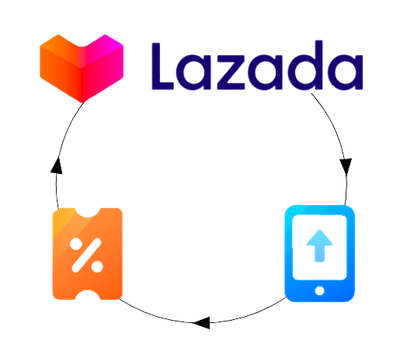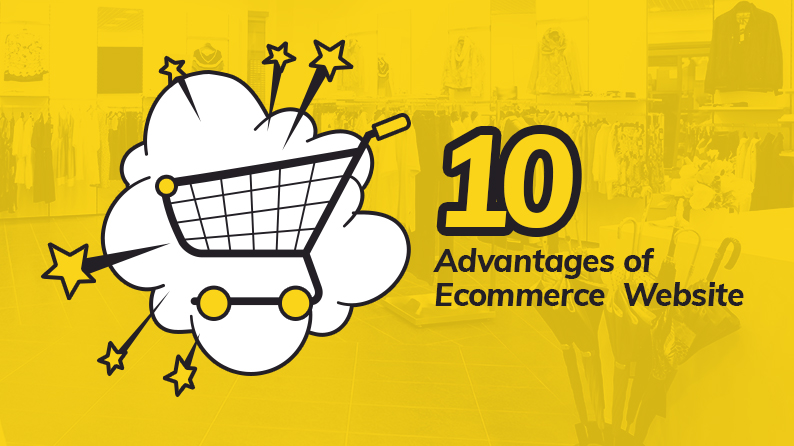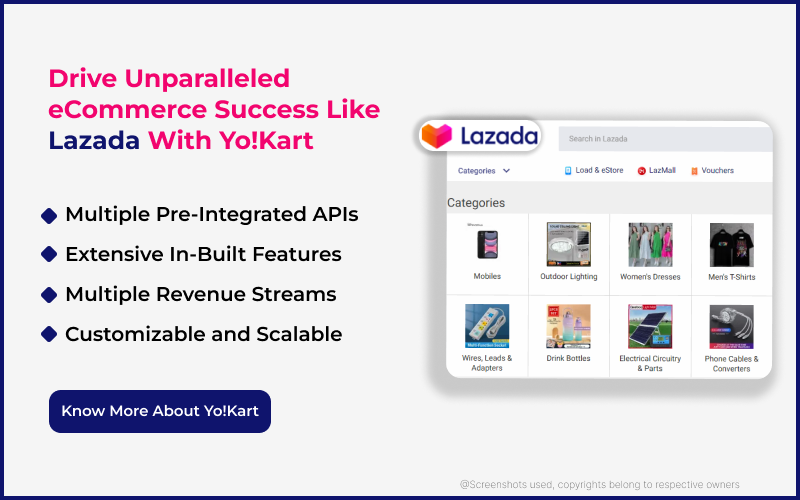It might not be an understatement to say that the last decade has truly been the eCommerce era. The industry has turned a new chapter, courtesy largely to the evolution of the overall digital infrastructure, better connectivity, and accelerated adoption, among other key drivers.
But it’s the artist’s imagination that infuses life in the painting, not the colors or the canvas. The eCommerce industry too, continues to prosper on the imagination of visionary entrepreneurs – who leverage these favoring growth drivers and script their success stories in the space.
One such success story has been Lazada – the South Asian eCommerce behemoth. Launched in 2012 by Maximilian Bittner, the marketplace leveraged the proven success mantra of a B2B2C eCommerce platform in an unexplored region.
By 2023, in just 11 years it is owned by the Alibaba group, operates in six countries with 130 million active annual user-base, and generated $21 bn in GMV, making it an inspirational success story in itself for startups to analyze and adopt.
In this blog, let’s analyze the underlying factors that have propelled the marketplace to success, and how building a B2B2C marketplace like Lazada in 2023 is much easier than before.
Table Of Contents:
- Lazada – A story of eCommerce opportunity seized
- The Evolving Business Model of Lazada – B2C to B2B2C
- Lazada’s business model, strategies and revenue streams
- Marketing strategies of Lazada
- Competitors in the domain for Lazada
- What does it mean for eCommerce in SEA
- Opportunities for aspiring entrepreneur and startups
- How to start with a B2B2C marketplace like Lazada
- To sum it up
Lazada – A Story of eCommerce Opportunity Seized
In the west, eCommerce has gained traction since the 90’s. However, the South East Asian region has been relatively slower – the development of the sector has started only in the last decade.
The reason being – there was less consumer awareness and acceptance of online commerce to begin with, lower internet penetration, and a lack of reliance on digital payments.
But that scenario started to evolve in the decade after – opening up possibilities for eCommerce startups to flourish.
The opportunity for favoring circumstances in the region was identified miles away – in Germany. Maximillian Bittner, an eCommerce pioneer of our times.
Headquartered in Singapore, Lazada soon took the shape of an eCommerce inventory-based store and commenced operations in 2012. In the year after, it transitioned into an online retail B2B2C marketplace by onboarding sellers to sell on the platform.
The marketplace was able to gain traction amongst the consumers, albeit with initial challenges. Nevertheless, the company successfully navigated through the impediments to post an annual GMV amounting to $1.36 billion across six countries in Southeast Asia, which essentially meant that it was the largest eCommerce player in the region.
Thereafter, in 2016, Lazada was acquired by the Alibaba group in a series of investments. The move extended Alibaba’s ecosystem and eCommerce expertise to Lazada, further propelling its competitiveness and popularity in the region
Let’s analyze how the marketplace operates, earns revenue, and the series of initiatives introduced by it, to achieve desired objectives.
The Evolving Business Model of Lazada – B2C to B2B2C
Lazada has not stuck to one functioning model, rather it has evolved to adopt varying business strategies with time to navigate through eCommerce complexities in the region it operates.
Being a pioneer of eCommerce marketplaces in the SEA region, it had an early mover advantage. No competition from the likes of Amazon, or Alibaba gave time to the company to establish itself on similar operative mechanisms as these companies.
While, it started selling its own inventory – It transitioned from a B2C to a B2B2C marketplace business model within a year. Its start as an inventory-based eCommerce store had meant that it could establish an eCommerce ecosystem, which it further extended to the sellers.
The functioning of a B2B2C business model is discussed in detail below.
B2B2C Marketplace Business Model Analyzed in detail
A B2B2C model works when B2B companies partner B2C companies to sell directly to the customers. Let’s delve further into the mechanisms of the model and the benefits it extends to all stakeholders.
From The Sellers’ Perspective:
Legacy brick-and-mortar businesses, which have operated via B2B channels exclusively – have based their sales, pricing, and other business strategies around the same. This has worked well in the past, but the evolving digital age has put newer imperatives in place.
Consumers are now more aware of product prices, making it harder for traditional sales channels to justify costs involved in the process – impacting the prices and eventually, sales. eCommerce has been the biggest driver of this change.
Thus, such businesses understand that they can no more be oblivious to this shift and need to devise a direct-to-customer sales channel.
By partnering with a B2C eCommerce undertaking, they get access directly to the customer base of the business, along with the ecosystem of the undertaking that supports online commerce operations.
This is different from the offline distributor sales channel since there is control over the pricing, wherein the business can offer more value to the customer. Moreover, the business is retailing directly to the customer and skipping the distributor involved in the sales process. Additionally, eCommerce is generating additional sales and revenue for the business, which is in addition to the offline sales channels.
From The B2B2C eCommerce platform Owner’s Perspective:
With multiple sellers onboard, online marketplaces tend to scale. Their business model primarily works by establishing a customer base and giving them value by connecting them directly to such businesses. This happens by digitizing the middleman, handling supply chains, and managing transactions via their eCommerce marketplace.
A B2B2C marketplace leverages its services and extends its customer base to the sellers. Thus bridging the B2C partnership component for B2B sellers to make the B2B2C model function.
With the understanding of the B2B2C marketplace business model, let’s see what Lazada has to offer to make the B2B2C machinery work for all the stakeholders involved.
Start with a Leading B2B2C eCommerce Software
Lazada’s services for the B2B2C model
Let’s have a look at the services that Lazada offers to its sellers
A Digital Platform: Sellers get to reach their customers on Lazada’s online website and mobile apps. Personalized individual storefronts facilitate the setting up of online storefronts fostering their brand image.
Global operations: Lazada ships globally through its LazGlobal venture. It serves around 200+countries and regions around the world. Sellers on the eCommerce marketplace get access to a global customer base. And sellers globally get access to consumers in the SEA region.
Lazada eLogistics: Lazada works with third-party logistics providers to offer delivery services to the sellers.
Payment solutions: Customers on the eMarketplace get to pay via multiple payment methods like cash on delivery, card payments, and eWallets including Lazada’s own wallet. This payment ecosystem allows sellers to sell on the platform.
Marketing Strategies: Lazada has been implementing key marketing strategies (discussed later in the article) to assist in higher sales on the platform. The sellers benefit from these strategies.
Advertisement Platform: The eMarketplace allows sellers to display advertisements on the platform to enhance the visibility of their brands and offers. An affiliate program further allows sellers to gain traction on their products.
Lazada’s initiatives: A number of initiatives (discussed later in the article) like Lazmall, LazGlobal, availability of downloadable digital products, and more have been introduced ― that have enhanced the versatility of the eCommerce multivendor store.
Lazada’s Business Model, Strategies and Revenue Streams
Lazada has introduced multiple business strategies to navigate complexities in the region, gain traction amongst sellers and buyers, and add opportunities to generate revenue.
Through its multi-pronged approach for revenue generation, it has propelled the business undertaking to encompass multiple niches across the eCommerce space. Discussed below are Lazada’s business strategies, launched intermittently over a period of time.
Revenue generated on Lazada Marketplace.
| Brand | Business | What Lazada Offer Through This Activity | Business Objective | Revenue Channel |
 | Lazada Marketplace | Encourages MSMEs and sellers that are not brands, to sell on the marketplace. (Levies 0% sale commission from local sellers) | To broaden the scope of the marketplace, allow sellers with lesser working capital to be involved, allowing C2C operations.Key to counter competition from Shopee | Commissions on each sale.The percentage is subjective to parameters. |
 | Lazmall | Exclusive shopping microcosm within Lazada for authorized branded products ― Both local and international. For Certified Retailers, Authorized Stores , and Flagship Stores | Online sales channel for Wholesalers and distributors for reputed brands. Crucially, Lazada extends its eCommerce infrastructure to B2B businesses primarily via the Lazmall channel | Commissions on each sale.The percentage is subjective to parameters. The commissions are higher. |
 | Lazada Global Shipping – LazGlobe | The marketplace’s cross-border operations is called the LGS. Overseas sellers ship to Hong-Kong based Lazada fullfillment center.to be further shipped by Lazada | Consumers can buy global products, while overseas sellers can access one of the largest growing eCommerce markets spread across six countries | Commissions on each sale.The percentage is subjective to parameters. |
 | Top-up and eStore | For the top-up of mobile and gaming credits; sale of downloadable digital products like eBooks; and deal vouchers for restaurants, travel, transport, entertainment, and more | With the Top Up & eStore, Lazada has ventured into the digital commodities niche | Undisclosed commissions. |
 | Online Grocery Delivery – LazMart | By acquiring Redmart, Lazada entered the online grocery delivery niche. It continues to operate exclusively in the country for online grocery operations | Part of its business expansion plans. Lazada has leveraged its infrastructure to catalyze growth in this niche ― in a country (Singapore) with the best internet penetration, higher per capita income, and metropolitan lifestyles | A fixed fee for each successful order. Additionally, a percentage-based commission is charged as well. |
 | Fintech | In partnership with FinAxar, Lazada extends financial assistance with a credit line option to the sellers. The services are tailored to meet the requirements of eCommerce sellers | With these services, Lazada can catalyze its expansion by attracting more sellers to the marketplace | The Fintech services charge 0.7-1.5 % with a cycle of 30 days. The rate is pro-rated. |
 | LiveUp membership | A monthly membership that offers benefits to the customers | Such memberships foster customer loyalty to the brand and also encourages higher sales by offering discounts | A fixed cost is billed periodically. |
In a nutshell, Lazada Group is an example of how eCommerce operations can be scaled up to achieve revenue streams from multiple sources. The industry offers innumerable opportunities for startups, leveraged by technology solutions, industry tie-ups, and more.
Learn How Marketplaces Allow Businesses to Earn from Multiple Revenue Streams
Marketing Strategies of Lazada
“You can be prepared for a certain aspect of entrepreneurship, but in the end, what it really comes down to on a day-to-day basis is trial and error. Constantly improving and adjusting what you’re trying to achieve, and having a flexible approach in the way you fulfill your vision,” Max Bittner in an interview on CNBC.com
A sound marketing strategy that balances long-term goals with short-term objectives is key to the success of any business ― eCommerce is no different, and Lazada sets a precedent of effective marketing channels that have propelled the marketplace to a leading force in the SEA region.
Broadly, like Lazada’s business model, its marketing strategies are primarily based on Amazon. But coming down to the specificities, the marketplace has introduced strategies and initiatives and formed alliances & mergers that have helped its growth and rise in popularity over the years.
Key highlights are discussed below.
Strategic use of Google Adwords
With the objective of customer acquisition and to be competitive in key product categories, Lazada implemented the use of programmatic Google Ads flexible bid. Specifically, it outranked its competitors on key keyword searches by a strategy known as target outranking share. It helped the online marketplace to optimize ROI on the budget for its cost-to-click campaign while maximizing ROI.
As a result of the strategy, Lazada’s market share within specific product categories accelerated. Ad impression share increased by 50% in new market endeavors, thereby increasing traffic on the website by around 30%.
Get the competitive advantage of extensive marketing features – Built-in
Shopping Festivals
Limited period discount offers have been a tested marketing strategy for marketplaces of larger scope. Lazada has implemented these strategies by hosting 24-hour shopping festivals on the website.
Hype is built prior to these festivals by effective social media marketing, marketing on the platform itself, and offline marketing channels.
The events draw in traffic to the website. This allows sellers to generate higher revenue and enhance their brand awareness.
LazLive ― Fostering buyer-seller interaction with live streaming
Lazada has consistently worked towards creating a favorable business playing field that aids in conducting its business operations.
Creating a seller base for its platform is one such activity that Lazada has worked upon. LazLive is another such initiative by the SEA marketplace.
LazLive is an in-app tool that sellers can use to live stream content to interact with their customers. This enables them to interact in real-time opening up multiple marketing possibilities.
Sellers can use the tool to announce marketing schemes, conduct new product launches, or simply work towards increasing their brand awareness with real-time customer interactions.
Industry Tie-ups and alliances
Symbiotic industry tie-ups and alliances can be beneficial to all stakeholders involved. Lazada has implemented this strategy to good effect ― implementing multiple strategic partnerships, and in the process, enhancing the scope of their business.
A list of some significant tie-ups is discussed below:
Strategic Partner: Unilever
Partnership objective for Lazada: Offline Channels, Shipment infrastructure development
Partnership Outcome for both parties
- To work closely and foster category development, supply chain and fulfillment, data and marketing, social commerce, and talent development.
- Launch of a Singapore-based offline store.
Strategic Partner: Taobao
Partnership objective for Lazada: Taobao is Alibaba’s C2C marketplace with an extensive seller base from China. Competitive pricing and a wide variety of products are key traction points for the marketplace. The marketplace already had a presence in the region. Preexisting impediments of language, higher shipping charges, and other factors made it an opportunity for Lazada.
Through the partnership, Lazada’s scope, and business appeal broadens.
Partnership Outcome for both parties:
- TaoBao is also part of the Alibaba group. Via Lazada the website gets access to the SEA market.
- Lazada extends services of the renowned shopping site to its customer base in SEA
Strategic Partner: Johnson & Johnson Consumer Health (J&J)
Partnership objective for Lazada: Offline Distribution Channels and better opportunities for sellers on Lazada’s platform with the J&J ecosystem in China. Partnership Outcome for both parties: In a symbiotic partnership, sellers from China gain access to the SEA market and sellers from the SEA region gain access to consumers in China.
These partnerships also elucidate the possibilities in the eCommerce space. The evolution of the sector encompasses not just the popular players like Amazon, Alibaba, or even Lazada. Rather the whole ecosystem is evolving ― enhancing capabilities by way of business alliances, and opening up greater possibilities for businesses to thrive.
Competitors in the Domain for Lazada
Given the ease of launching a multivendor marketplace, (especially when a B2B2C eCommerce software is used to build one) ― an online marketplace can be up and running in less than a month.
The result of short go-to-market times is that competition in the space is intense, even for businesses like Lazada, which have an early mover advantage. Some of its key competitors are discussed below.
Since Lazada operates in a vast region, spanning six countries ― Indonesia, Malaysia, the Philippines, Singapore, Thailand, and Vietnam. Competition to Lazada comes from both, marketplaces that have a presence throughout the region & beyond; and online businesses that have a region-specific presence.
Shopee stands out as the biggest competitor with a business model very similar to that of Lazada. It has based its operations around C2C operations and gradually transitioned to include B2C sales as well. Low prices and a wide assortment of products remain its primary USP
It is active in multiple countries ― Indonesia, Malaysia, Philippines, Singapore, Thailand, Vietnam, Taiwan, Argentina, Brazil, Chile, Colombia, Mexico, Poland, and Spain.
Tokopedia & Bukalapak: Both these websites feature consistently in the top 5 when the average visits are taken into consideration. Although active primarily in Indonesia, these sell general merchandise on their platform. Based on similar parameters, these are followed by Bibli.
Amazon: The eCommerce giant has ventured into the region as well. Currently, it operates in Singapore, where internet connectivity and infrastructure development are most supportive of eCommerce operations. It plans to extend operations to Vietnam in the near future.
Get started in quick time with clone script of popular B2B2C marketplaces
What Does it Mean for eCommerce in SEA
Lazada forayed a region where the time was opportune for eCommerce to grow, yet in order to build a favorable ecosystem it had to navigate impediments. In doing so, it has paved the way for the growth of eCommerce in the region.
The development of its supply chain has led to overall infrastructure development in the region. Moreover, apart from offering digital payment solutions, the introduction of Cash On Delivery gave a boost to building trust and prepared the groundwork for future eCommerce operations.
Marketing initiatives like 24-hour sales, technology-driven initiatives like Lazlive, vendor-building steps such as Fintech, and other steps have further accelerated eCommerce.
Additionally, competitors such as Shopee have enhanced the traction of eCommerce for consumers.
Undeniably, eCommerce has fostered the growth of internet penetration and has also encouraged the sale of mobile devices leading to a cyclic growth of online retail by way of m-commerce.
According to Temasek and Google, the digital economy in the SEA region is expected to grow to US $200 Bn within the decade (published in 2017).
And given the growth rate, the SEA Internet economy is estimated to cross $300 billion by 2025. This figure is at least five times than the growth estimated earlier.
What this means is that Lazada has in effect laid the foundation for eCommerce to flourish in the region.
Opportunities for Startups
The foundation laid by Lazada opens up eCommerce opportunities for startups. Not just players of the scale of Lazada, but the overall development of the ecosystem brings startups of lesser scope into the picture as well.
eCommerce is still a broad term that includes retail, B2B wholesale, rental, online learning, and a lot more online commerce niches. With Lazada-fostered ― enhanced consumer acceptance of commerce through online channels, the region is now open for startups to explore the viability of more industry niches in the region.
How to Start with a B2B2C Marketplace like Lazada
Once the opportunity is identified, launching a multivendor marketplace leaves one with two most sought-after alternatives.
A straightforward approach is building a website from the ground up. A process that requires significant time and resources.
Alternatively, a faster, and less resource-intensive method is choosing the best multi-vendor turnkey solution for your business idea, customizing upon it (if needed) from a team with eCommerce expertise, and capturing the eCommerce opportunity while it presents itself.
A platform that catalyzes success for startups would need to have tools that have been used by a marketplace website like Lazada.
Foster Impeccable eCommerce Experiences with Yo!Kart Marketplace Solution
Analyzing Underpinnings that have made Lazada successful
Lazada is essentially an eCommerce marketplace at its core. Marketplace features and functionalities that help buyers to experience eCommerce intuitively, sellers to sell, and the admin to manage the business operations efficiently make up for the underpinnings of the online marketplace.
Moreover, scalability has played an integral role in letting Lazada start with an inventory-based business model to a mega eCommerce platform that is inclusive of multiple undertakings extending across numerous activities.
Lazada has consistently introduced technology-driven initiatives on the platform, which has meant tweaking the platform with customizations. This has allowed the marketplace to stay one step ahead of the competition.
Moreover, alliances formed within the eCommerce ecosystem and outside of it – have made it possible to expand the business to the scope it is today.
Yo!Kart – Tailormade for ecommerce marketplace success
Yo!Kart is a customizable multivendor marketplace solution that has been purpose-built from the ground up by an Agile team with functionalities from the perspective of all stakeholders in a multivendor platform ― consumers, sellers, and the admin.
The solution has an intuitive UI/UX that makes the shopping experience of consumers memorable. Moreover, conversions are encouraged due to the ease of shopping and features like multicart checkout, elastic search, and more.
Sellers on the platform have individual storefronts that can be personalized to foster their branding objectives. Rich-featured product catalog, capable CMS, robust product management, and more enhance sales.
The admin of the marketplace gets features to manage eCommerce operations, market the website, scale transcend language barriers, and more.
The software comes with multiple business APIs pre-integrated that allows leveraging tie-ups with third-party service providers from within the eCommerce ecosystem. Shipping fulfillment, automated tax management, and accounting are some examples of eCommerce imperatives that can be eased and automated by these services.
Marketplace owners can earn via sale commissions, subscription packages, monetizing advertisements, PPC module, and more.
Significantly, Yo!Kart is backed by an experienced, trusted, and proven team for end-to-end customizations.
The software is offered along with the source code with a one-time payment. There are no recurring or transactional charges. This reduces overheads and allows businesses to stay competitive. Free Technical support for Upto 1-year allows businesses to settle in with their venture.
Yo!kart has powered multiple eCommerce businesses in the South East Asia region as well.
For instance, Indonesia based Halalpedia is an eCommerce marketplace for Halal products. It facilitates the sale of halal products.
These are some of Yo!Kart powered marketplaces, in operation in the region.
Explore Result-driven Features of Yo!Kart
To sum it up
Lazada entered a market where eCommerce opportunities were growing, but significantly, it also meant that it had to work towards creating a favorable ecosystem to conduct its business activities.
The Max Bittner founded marketplace braved through the challenges with strategies and technology-driven initiatives that propelled them to pioneer eCommerce in a region that was preparing itself for such a business.
eCommerce startups have the opportunity to use turnkey solutions like Yo!Kart, that is purpose-built to build marketplaces like Lazada, and enter the competitive yet flourishing industry with a similar approach in a new region or enter a new industry niche.
FAQ
Q1. What is the difference between B2B and B2B2C?
Ans: These terms refer to the operative business model within an eCommerce multivendor marketplace. While all such platforms have three primary participating entities i.e. the marketplace business, the sellers, and the buyers – their roles vary according to the business model of the platform.
In a B2B marketplace, for example, Alibaba, the marketplace provides a platform for sellers (businesses) to sell to the buyers (businesses) on the platform. So the transactions take place between businesses. These can be manufacturers, distributors, brand retailers, or any other business for that matter. Take, for instance, wholesalers using Alibaba to procure their products from manufacturers on the platform. This is how a B2B marketplace works. These connect businesses along the supply chain for respective products.
A B2B2C marketplace, on the other hand, is a platform that functions like an Amazon or Lazada. The platform here plays a more active role. Apart from setting up and managing the technological infrastructure, they also provide services like fulfillment, logistics, after-sales services, and more.
Significantly such marketplaces also engage and attract customers to the platform. Sellers simply sign up on the platform, use the infrastructure, and services, and sell to the buyers of the platform.
While these differences are more on technical terms, practically, the lines can be less blurred. Moreover, these further have their variations. What does not change though is that the buyers in B2B are businesses, while in B2B2C are end consumers.
Q2. How to choose the best B2B2C eCommerce software?
Ans: A B2B2C business will function best when the B2B2C eCommerce platform offers result-oriented features to each of the platform participants – to carry out their respective activities with ease and effectiveness. The buyers would need an ecosystem to browse, select, and buy products seamlessly. The sellers need the right tools to sell their products and promote their businesses. While the marketplace operators require comprehensive functionalities to create that initial impression with the users that makes them have a liking for the platform. Additionally they need an efficient and potent system to carry out their eCommerce operations.
Apart from features, you will need a B2B2C eCommerce software that offers flexibility in form of customizability, allowing you to tailor the software as per your business requirements. Last but not the least, you will need a solution that offers you the advantage of lower business overheads and a reliable after sales support system.




